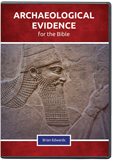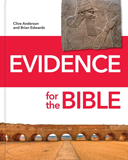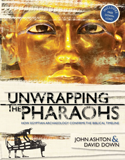In the Shadow of Shiloh
While excavating the Old Testament city of Shiloh, a team of archaeologists discover artifacts that point back to the temple—and forward from there to Christ’s sacrifice.
It is 3:45 a.m. on Monday in Jerusalem. The alarms in my hotel room begin to blare—my phone next to my head and my backup alarm a few feet away on my desk. Between me and the desk lies a proverbial Grand Canyon. Moving slowly, I silence the alarms and resist the overwhelming urge to climb back into bed. I grope around for a bit, forgetting where I put my phone just five seconds earlier. The cobwebs gradually begin to clear as I find the clothing and supplies I had carefully laid out the night before. I stagger to a 4:15 a.m. breakfast. Coffee, any coffee, will do.
The newly arrived volunteers buzz with excitement while the already grizzled veterans make their way into the dining hall, milling around in various states of wakefulness. Despite the early wakeup calls to avoid Israel’s midday sun, they love this work—and so do I. Another thrilling day awaits me and dozens of volunteers at the Shiloh (Shee-loh) archaeological excavations, operated by Associates for Biblical Research (ABR). As one of the most important Old Testament (OT) cities, Shiloh was the place where the Israelites’ sins were forgiven by God through animal sacrifices. Our archaeological discoveries sharpen the image of this once integral location that foreshadowed Christ’s redemptive work on the cross.
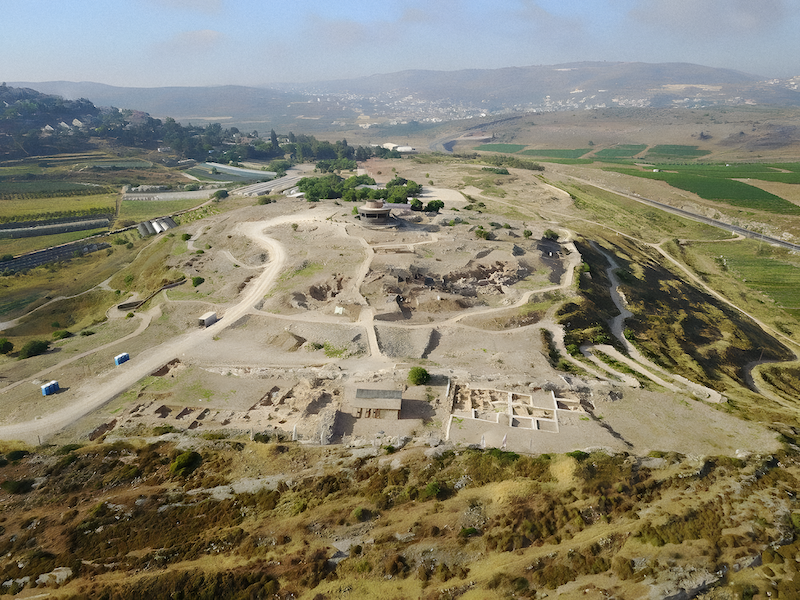
ABR archaeologists and volunteers have been uncovering the history of Shiloh at the dig site since 2017.
Photo courtesy of Associates for Biblical Research
Digging into the History of Shiloh
The region around Shiloh was controlled by the Amorites prior to Joshua’s entrance into Canaan (Numbers 13:29). According to Joshua 18:1, the tabernacle was erected at Shiloh in the territory of Ephraim. For around 300 years, it remained there at the heart of the OT sacrificial system. The people of Israel traveled to Shiloh yearly to worship Yahweh and offer sacrifices (1 Samuel 1:3). Hannah offered her son, Samuel, to the Lord’s service at Shiloh (1 Samuel 1–2:11). The ark of the covenant was kept there (1 Samuel 4). After hearing his wicked sons had died and the ark was captured by the Philistines, Eli the priest died with a broken neck at Shiloh’s city gate (1 Samuel 4:12–18). Finally, God brought destruction on Shiloh as an act of judgment against Israel for their rebellion and idolatry (Psalm 78:60; Jeremiah 7:12–14; 26:6; 26:9). In Jeremiah 7:12, God tells the prophet to “go now to my place . . . in Shiloh . . . and see what I did to it.” He was warning them that Jerusalem could fall under his judgment for their sin, just as Shiloh once did.
The opportunity to dig at the same site where the tabernacle stood for centuries is extraordinary.
Sometimes archaeological digs confirm a location from Scripture that was previously unknown or disputed, such as our dig at the city of Ai detailed in Joshua chapters 7–8.1 However, Shiloh’s identification has never been in doubt. Eusebius and Jerome identified its location in the fourth century AD. After applying for permission from the authorities in Israel, ABR, under the direction of Dr. Scott Stripling, began excavations in 2017 on the northern end of the ancient city. While we valued our previous work at Ai, digging at the same site where the tabernacle stood for centuries was an extraordinary opportunity.
The archaeological profile of Shiloh begins in the Middle Bronze (MB) II period (ca. 1700–1650 BC). The Canaanites constructed a massive fortification system in MB III (ca. 1600). This fortified architecture was typical of the period, explicitly described by Moses himself (Deuteronomy 1:28, 9:1). Canaanite occupation continued until Joshua and the Israelites took control of Shiloh during the Conquest of Canaan (1406–1400 BC).2 The Bible records no battles in this part of the country. After the defeat of Ai, the Israelites went directly to Shechem. They met no resistance, which implies Shechem embraced the Israelites. This may have been the case with Shiloh as well (Joshua 8:30–35). Deposits of animal bones, cultic vessels (pottery used for religious purposes), and domestic pottery show that Shiloh was continually occupied by Israelites from roughly 1400 to 1075 BC.
First Samuel 4 implies that the nearby battle with the Philistines at Aphek resulted in Shiloh’s destruction. Eventually, the Israelites rebuilt Shiloh in the Iron Age II period (980–587 BC). Previous archaeologists and the ABR team have also discovered evidence from the early and late Hellenistic (332–63 BC), early Roman (63 BC–AD 136), Byzantine (AD 325–636), and Early Islamic (AD 636–1099) periods.
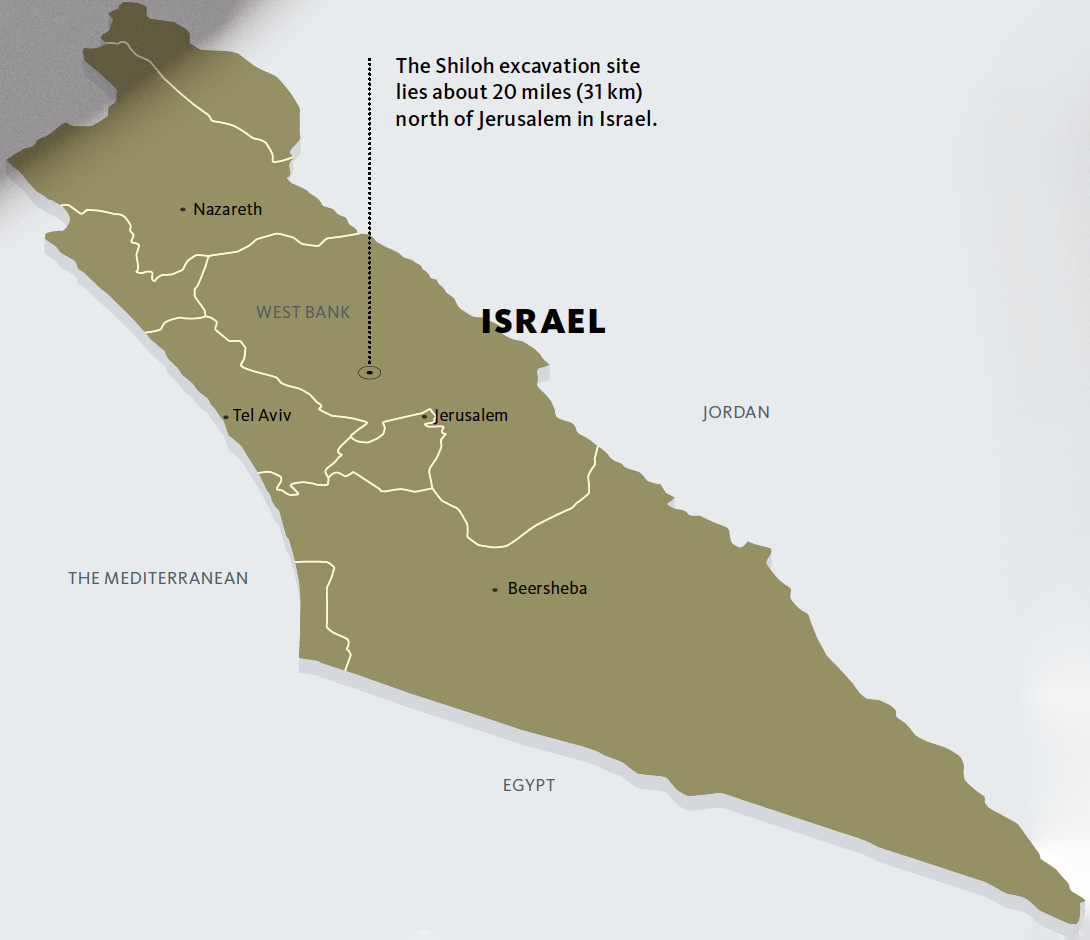
The Shiloh excavation site lies about 20 miles (31 km) north of Jerusalem in Israel.
Digging In
Over two seasons, I supervised a group digging on the northern end of Shiloh, just outside the Canaanite city wall fortifications. We experienced Shiloh’s archaeological profile firsthand, reclaiming artifacts and uncovering architectural features that shed light on this significant city.
We began by excavating and then dismantling Byzantine era terrace walls. Over several weeks, we slowly chipped our way down to bedrock. Along the way, we uncovered hundreds of animal bones, and then meticulously bagged, documented, and saved the discoveries for scientific study. We also discovered a Canaanite wall built on bedrock, seven courses (stone layers) tall and running perpendicular to the city wall. Alongside the wall were the remnants of a flat-bottomed storage jar, between 3,600 to 3,700 years old. Our team also found ivory, a slingstone, a basalt grinder for grain, two cosmetic applicators, a stone lid handle, shell jewelry, glass, a flint blade, and a coin.
Other Findings
Beyond my own firsthand archaeological discoveries and experience, our staff and volunteers have uncovered significant archaeological evidence that correlates with the biblical descriptions of Shiloh.
Ceramic Pomegranate
The pomegranate was a common motif in the Israelites’ worship at the tabernacle, adorning the hem of Aaron’s robe (Exodus 28:34, 39:26). Exodus 28:33 reveals the fruit’s sacred status: “On its hem you shall make pomegranates of blue and purple and scarlet yarns, around its hem, with bells of gold between them.” The bells signaled the entrance of the high priest into the Holy Place so that he would not drop dead (Exodus 28:35). The fruit later appeared in Solomon’s temple (1 Kings 7:18, 42).

Ceramic pomegranates reflected the importance of the fabric pomegranates adorning the high priest’s robe.
Photo by Michael Luddeni
In June 2018, supervisor Tim Lopez excavated a ceramic pomegranate near a wall from Iron Age I, when the tabernacle was in operation at Shiloh. The pomegranate is quite small, only 1.7 inches (4.3 cm) high. It still had four of its five prongs intact.3 The ceramic pomegranate discovery verifies the biblical description of Shiloh as a sacred precinct.
Israelite Storage Jars and Interior Rooms
The 17-foot-wide (5.3 m) massive city wall surrounding Shiloh included storage rooms clustered in groups of three or four running inside the perimeter. A significant number of early Israelite storage jars (called pithoi) have been found in these rooms. These collared-rim jars, quite common throughout the Iron Age I period (1177–980 BC), are definitively Israelite. The vessels were likely used to store grain tithes and vital supplies for the Levitical priests living at Shiloh.
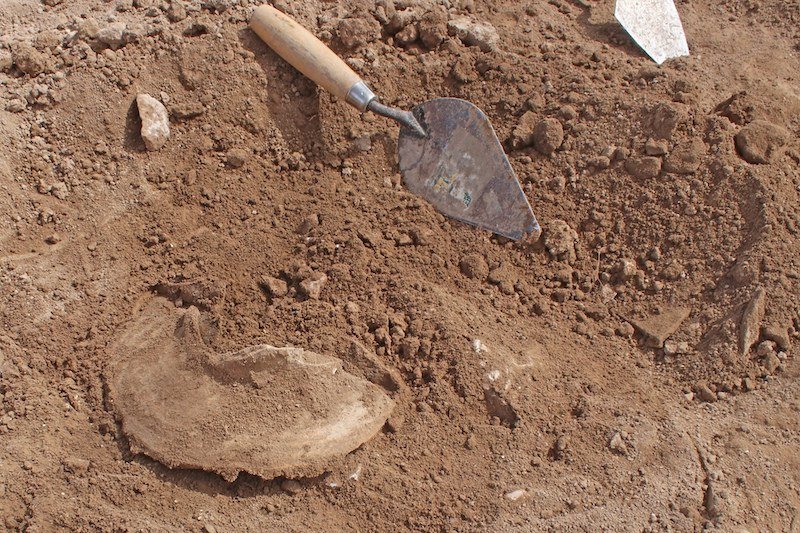
Photo courtesy of Associates for Biblical Research
Evidence for a Philistine Destruction of Shiloh
In 2019, the team exposed a sealed plaster floor, which included evidence of fire and some type of destruction. Pottery from the Iron Age II was found right above the floor. When we sent the burnt material to a laboratory for Carbon-14 testing, the date came back to roughly 1075 BC, matching the date range of the pottery below the floor. This evidence correlates chronologically with the Israelite defeat against the Philistines at Aphek (1 Samuel 4). Psalm 78:54–61 and Jeremiah 7:12 allude to the destruction of Shiloh at the hands of the Philistines, right around this same time.
City Gate
In 2019, when our team found a large breach in the city wall of Shiloh, we theorized it might be the city gate. Gate socket stones were also found nearby. Because Eli the priest died at the city gate in 1 Samuel 4:12–18, its discovery would be of great historical importance.
After a two-year hiatus, due to the COVID-19 pandemic, we returned to Shiloh in 2022. The gate complex is affixed to and contiguous with the perimeter wall on the north. The exterior portion measured approximately 32.8 x 65.6 feet (10 x 20 m) and featured two vertical megaliths (large stones) framing a doorway. It turns out that the wall, which my team excavated in 2017–2018, could very well be part of the city gate structure. We hope to clarify this evidence in future excavation seasons.
Monumental Building
The original tabernacle rested at Shiloh for over three centuries. At some point, a permanent building most likely replaced the tent structure. First Samuel refers to permanent features such as doors instead of temporary features such as curtains. Throughout the 2017–2019 seasons, ABR teams began to uncover a large building from the Judges period (Iron Age I). Our ceramic pomegranate was found near this structure. As we unearthed this east-west building, our team was able to measure its dimensions, except one corner. Thus far, the measurements closely align with the dimensions of the tabernacle, as recorded in Exodus 26.
Animal Bones
Part of archaeological research involves carefully reassessing previous academic and field work. In the early 1980s, archaeologist Israel Finkelstein excavated Area D, located northeast of Shiloh’s summit, atop and outside the city wall. This work yielded a large deposit of burned animal bones (called a favissa), identical to the animals specified for sacrifices in Leviticus. His team also found numerous cultic vessels. These vessels and the deposit of around 3,000 bones also confirm the existence of a sacrificial system at Shiloh. In 2022, ABR unearthed an additional 7,325 bones and bone fragments from Area D.
Finkelstein dated these materials to the period prior to Joshua’s Conquest, theorizing that the remains were Canaanite. In 2021, supervisor Jordan McClinton reevaluated the pottery and concluded that the pottery forms were made later, during the time Israel entered the land and into the Judges era.4
Sacrificial Altars
Over 50 sacrificial altars from the Iron Age period have been found in Israel at Shechem, Mt. Ebal, Gezer, Dothan, Beersheba, Ekron, Dan, Arad, and Lachish. The first altar at Shiloh had one rounded stone altar horn remaining and was discovered by a previous excavation on the south of the tell (city mound). It had been reused by the Byzantines to build a wall. The second altar was discovered by Tim Lopez, near the monumental building. The third altar was also being reused, this time in a wall from the early Roman period. All three point to sacrificial activity at Shiloh.5
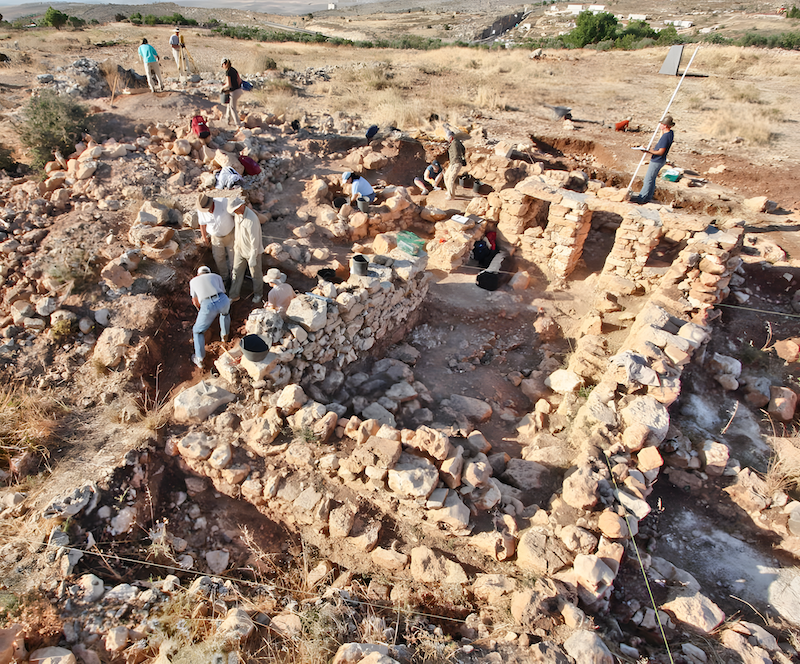
Photo courtesy of Associates for Biblical Research
No More to Shiloh
While our dig at Shiloh points to the Old Testament tabernacle, which has long disappeared from history, a greater and more perfect Tabernacle was sent from heaven 2,000 years ago. Not made by human hands, this Tabernacle entered once for all into the holy places, by means of his own blood, thus securing an eternal redemption for those who repent and believe in him for the forgiveness of sins (Hebrews 9:11–28). The Israelites traveled to Shiloh to be reconciled to God. Now, Jesus of Nazareth has come into the world to permanently seal and fulfill what was only a temporary reconciliation before. Shiloh is merely a shadow, pointing to Christ’s sacrifice on the cross—and with each piece of the city we uncover, we can rejoice indeed.
Answers Magazine
July–September 2023
The undercurrent of Critical Race Theory is tugging students away from God’s Word. How should parents respond?
Browse Issue SubscribeFootnotes
- Henry Smith, “Getting Archaeology Right at Ai,” Answers, July-September 2013: 37-38.
- The Conquest has been alternately dated by Ussher and others at 1451 BC.
- Tim Lopez, Scott Stripling, and David Ben-Shlomo, “A Ceramic Pomegranate from Shiloh,” Judea and Samaria Research Studies, no. 28 (2019): 37-56. doi:10.26351/JSRS/28-1/7.
- Jordan McClinton, “A Reexamination of Late Bronze Pottery at Shiloh,” presented at the Near East Archaeological Society annual meeting, November 2021. Available online at: https://www.youtube.com/watch?v=Ea88jz1tQco. McClinton notes that the pottery assemblage from Area D is identical to forms found at Beth Shean, supporting his redating of the material.
- Additional resources on Shiloh include Scott Stripling, “The Israelite Tabernacle at Shiloh,” Bible and Spade 29, no. 3 (Summer 2016): 88–94; Scott Stripling, “Shiloh's Tabernacle: Have We Discovered the House of God?,” online at: https://www.youtube.com/watch?v=0OVdSA14gZ4; Mark Hassler, “Altars of Sacrifice,” Digging for Truth Episode 173, online at: https://youtu.be/USQP-W8C09Q; Scott Stripling, “Promised Land Pomegranates.” Bible and Spade 32, no. 2 (Spring/Summer 2019): 80–82; Scott Stripling, “The Shiloh Archaeological Excavations: Seasons 1-3.” Siegfried Horn Lectureship Series, Andrews University, September 2019. Online at https://youtu.be/oqMZ4mA5_4M.
Recommended Resources

Answers in Genesis is an apologetics ministry, dedicated to helping Christians defend their faith and proclaim the good news of Jesus Christ.
- Customer Service 800.778.3390
- © 2024 Answers in Genesis




